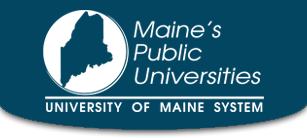Learn helpful tips for writing your resume
Text provided by the University of Maine’s Career Center, The Division of Student Life (External Site).
What is a resume?
A resume is a one or two page summary of your skills, accomplishments, experiences and education. When preparing a resume, you are trying to capture a prospective organization’s interest or attention. The goal of the resume is to help you to get an interview. You don’t have to be a skilled writer to write a great resume.
Be prepared to write several drafts and follow the suggestions in this guide. Keep in mind that the time it takes to write a good resume is well spent!
Be prepared
As you create your resume be sure to organize your categories beginning with those that are most relevant to the opportunity. Consider what an organization is looking for in a candidate and make it easy for the reader to notice those qualifications by following these tips:
- Sell yourself
- Use active language
- List most recent first
- Check for grammar
- Use consistent formatting
How to build your resume
Typical resume content areas:
- Contact information
- Education
- Work Experience
- Activities, honors and leadership
- Skills (be specific)
Additional content headers:
- Volunteer activities
- Student teaching/clinical experience
- Certifications
- Technical/computer skills
- Professional affiliations
- Language proficiencies
- Travel
- Accomplishments
- Military experience
- Related coursework
- Internship experience
Things to consider:
Resumes should be tailored to the particular job you want, with specific information emphasized in order to grab an employer’s attention. Always customize your resume for each position you apply for. Use the job description as a guide: The information listed in the bullet points under each job heading should highlight skills related to the requirements of the job for which you are applying.
Margins:
Adjust the margins to accommodate the look and length of your resume. Typical margins are 1″, but narrower such as 1/2″ is acceptable.
Font:
For ease of readability, use 12-point font. Font should be black, additional colors are not necessary.
Length:
Most resumes are 1-2 full pages.
Appearance:
Utilize consistent formatting and insert stylistic differences through bold, italic and underlined font, sparingly. A resume should be easy to read with appropriate white space.
Action words
When describing your experiences start bullet points with action words. Use present tense for any current role and past tense for previous experiences.
Consider using the following words in your resume:
Applicant Tracking Systems (ATS)
When you apply online, your application materials are likely to be filtered through an applicant tracking system (ATS). ATS collects, organizes and sometimes interprets your documents based on specific algorithms. Sometimes, potential employers will utilize an ATS to determine which candidates meet their interview criteria.
When applying online, consider the following:
- Use the job description as your guide to include key words and required qualifications.
- Incorporate key words and be sure to include your experiences, strengths and skills as they correlate to the qualifications and duties outlined in the job description.
- Utilize common category headings and avoid text boxes, columns, headers and footers, uncommon fonts and graphics/images.
Bold, underline, italics and simple bullets are typically compatible.
The goal is to get your resume in the hands of a hiring manager, so be sure to create an organized, reader friendly document. Use an ATS friendly format by following the directions given in the application process closely and provide them with the type of document they request. If they do not specify, .docX documents are generally most compatible with ATS.
Pro tips: What makes a strong resume?
- Make sure to include in your header:
- Name
- City
- State
- Contact information
- Write a unique resume for each opportunity. Thoroughly read the job description and research the company. Describe your knowledge, skills and experiences in a way that speaks directly to that employer and position.
- Consider how all experiences have value. You learn great transferable skills as a cashier, server, camp counselor or ice cream scooper. The question is: What skills were learned and how will those skills help in your next job? Think beyond the job description.
- Include five key elements with your experiences. Make sure each position on your resume has five key elements: position name, organization, location, dates and descriptive bullet points.
- Be specific with your statements.Incorporate skills into descriptive bullet points under each header to prove that you utilized that skill instead of simply stating that you have it.
- Be kind to the reader. Format your resume consistently to be read quickly and have key information highlighted. Use bullets, not paragraphs and use active language.
Bonus!
- Use resume paper if you are handing a resume to an employer or sending via traditional mail.
- Invest in a pad folio to carry your resumes to an interview or career fair.
- If references are requested, list those on a separate page.
Frequently asked questions
Answers to your resume building questions:
Get help
Contact the Career Center at your university to schedule an appointment if you have further questions regarding application materials:
- University of Maine Career Center (External Site)
- University of Maine at Augusta Career Connections (External Site)
- University of Maine at Farmington Career Services (External Site)
- University of Maine at Fort Kent Career Services (External Site)
- University of Maine at Machias Career Center (External Site)
- University of Maine at Presque Isle Career Readiness (External Site)
- University of Southern Maine Career & Employment Hub (External Site)

